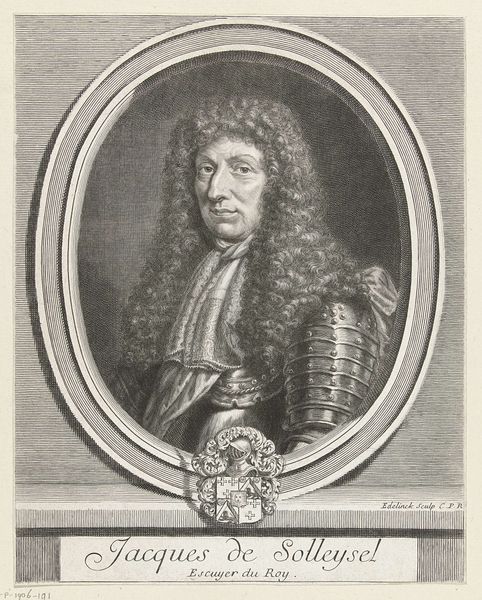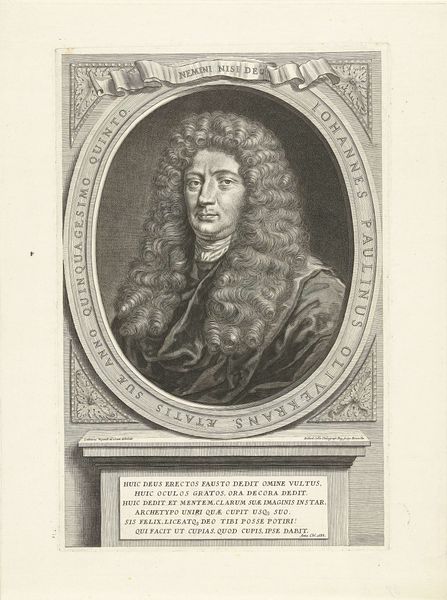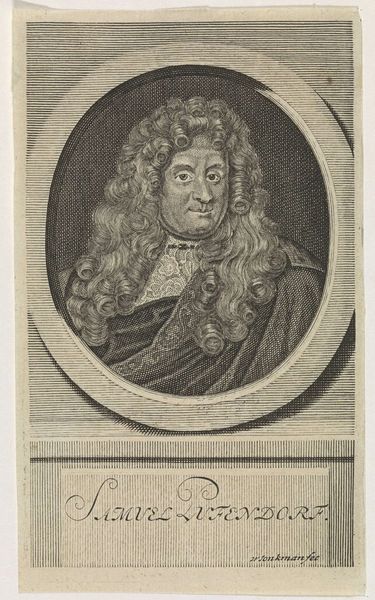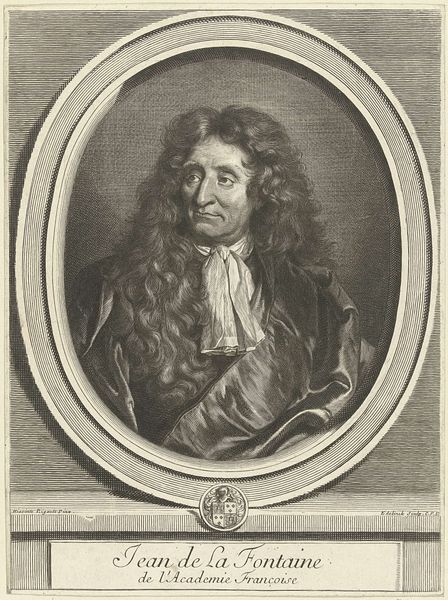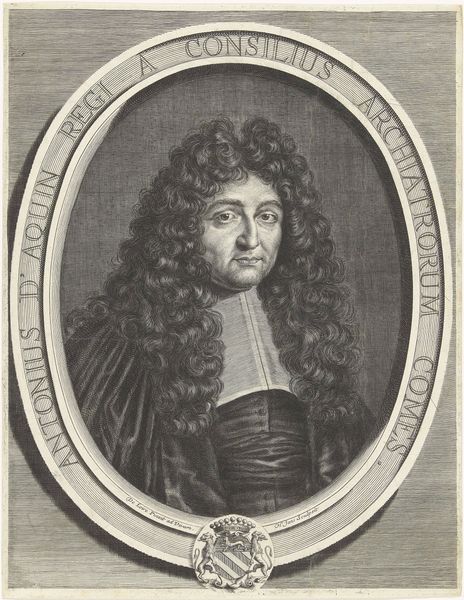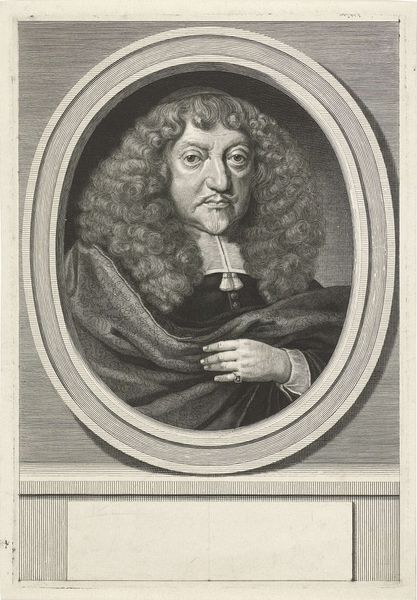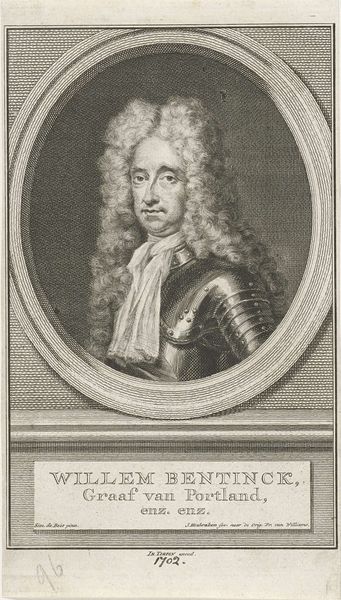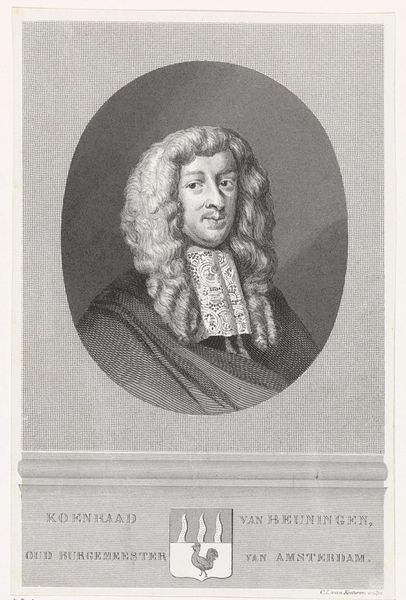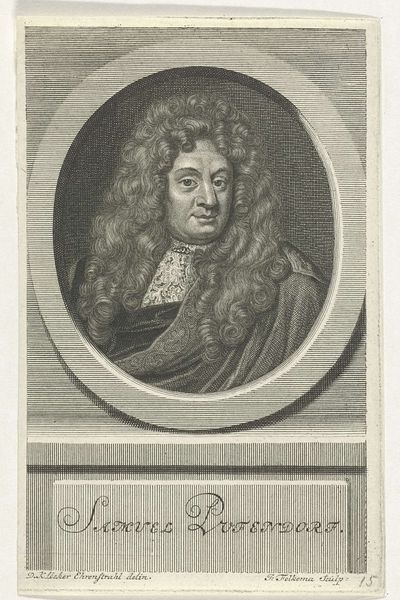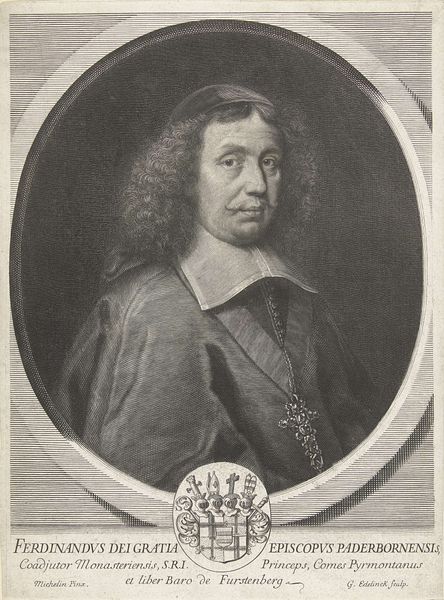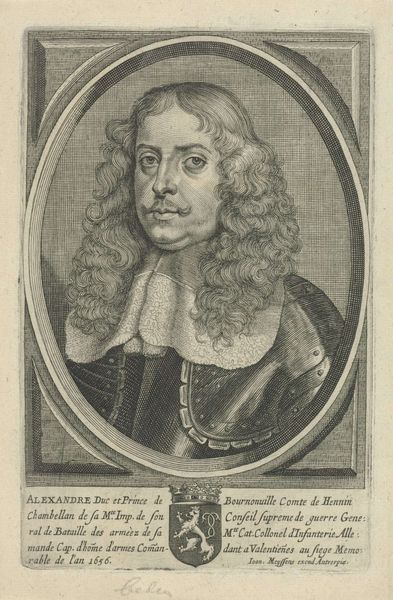
engraving
#
portrait
#
baroque
#
old engraving style
#
line
#
portrait drawing
#
engraving
Dimensions: height 235 mm, width 162 mm
Copyright: Rijks Museum: Open Domain
This is a portrait of a man, made by Gérard Edelinck, sometime around the late 17th century. It is an engraving, a printmaking technique that was extremely popular in Europe at the time. Consider how the man’s flamboyant wig and luxurious robe advertise his elevated social position. The coat of arms below the portrait suggests that he was perhaps a member of the French aristocracy. France was a highly stratified society at this time, and portraiture played an important role in reinforcing these social divisions. During this time, the Royal Academy of Painting and Sculpture played a powerful role in shaping artistic taste and practice. Edelinck himself was a member of the academy, so this portrait would have represented the height of artistic achievement in the eyes of the French art establishment. As historians, we can use resources, such as letters, diaries, and financial records, to learn more about the social and institutional contexts in which portraits were made. We can also analyze the visual codes and cultural references that portraits employed to communicate meaning.
Comments
No comments
Be the first to comment and join the conversation on the ultimate creative platform.
